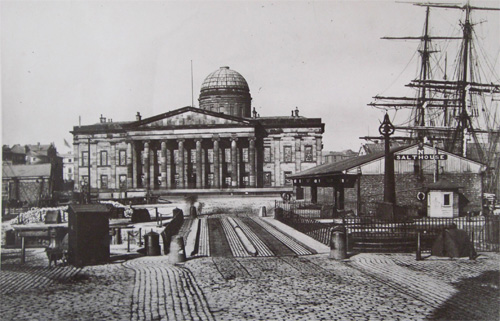‘Valuing heritage’ in the Liverpool School of Architecture

The city of Liverpool is renowned for its rich architectural heritage – its most high profile accolade arguably being its inscription in the World Heritage List by UNESCO in July 2004 as ‘The supreme example of a commercial port at the time of Britain's greatest global influence’. The city’s contribution to architectural education is no less noteworthy: the University’s Liverpool School of Architecture (LSA) holds a prominent position in the development of architectural education, being one of the UK’s oldest university schools of architecture, the first to have RIBA accredited programmes, and one that continues to innovate in the design of its curriculum. Pro-actively engaging with its immediate urban context, the School draws on the past and the present of the city of Liverpool and its many architectural and urban design challenges that are of direct concern to the evolution of the profession.
A current emphasis on the closer integration of architectural heritage with architectural practice is soundly founded on the School’s research excellence in the field of architectural history and also demonstrable in the recent launch of a new postgraduate course, MA in Modern Architectural Heritage. Student-led initiatives are equally noteworthy: a number of final year dissertations by RIBA Part II students focuses on the city of Liverpool, its history, architectural heritage, current perspective and future potential.
In this connection, the School is very proud to see an excerpt of one of its 2012-13 dissertations published in the official magazine of the Institute of Historic Building Conservation (IHBC), Context. MArch graduate John Watling’s article, entitled ‘The loss of the Liverpool Custom House’, is based on his final year dissertation. The article is included in a special issue on ‘Valuing heritage: the conflict and controversy’ (Context, No.133, March 2014, pp. 35—38) and discusses the fate of the Liverpool Custom House (1839). Designed by eminent local architect John Foster Jr (1787—1846), and widely considered his masterpiece, the building was bomb-damaged during the May Blitz of 1941 and subsequently demolished in 1947 – the same year that the current ‘Statutory List of Buildings of Special Architectural or Historic Interest’ was introduced. Standing opposite the Albert Dock its retention would have had a strong impact in the subsequent re-development of the city centre. John’s article, and dissertation, discusses a key phase in the evolution of heritage protection the principal issues of which remain to date of relevance.